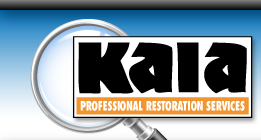SEWAGE
WHILE YOU'RE WAITING FOR HELP...
While you're waiting for a specialist to respond, it is important you remain away from the effected area. With the many potential bio-hazards posed by sewer backup, it is best left to the professionals to work in a safe, clean manner. Additionally, do not use anything that has a drain until you've been given the OK. Depending on where the blockage is, your sinks, showers, dishwashers, and toilets may compound your problem.
Sewage Remediation
Indoor water destruction encourages the growth of bacteria, which are disease-causing pathogens and allergens.
When flooding occurs, a quick reaction to seepage, spillage or backups can save your valuable property from direct water damage, as well as protect your family or other occupants from harmful contaminants. Immediate response to a water emergency saves time and money and protects property and health.
We immediately remove harmful substances, salvage and restore valuable property and sanitize all surfaces and systems to remove raw sewage and dangerous organic contaminants.
Pipes and Sewer Blockage
There are three main causes for pipes and sewer blockages and while some are simple to detect and easy to prevent some are hidden and can hardly ever be detected before the damage occurs.
1. Solid Flushes
The most common cause of sewage backup is a blockage of the lateral service pipe between the home and the city main. This is usually caused by solid objects, accidentally flushed down a household drain.
In home and office plumbing systems, the main cause is grease accumulation. hair, dirt, or solid materials, such as disposable diapers, sanitary napkins, broken dishware, garbage, and debris that are too large for wastewater pipes to handle.
This problem is usually a local problem and when you experience it, only water from your home will be backing up and the amount of backup will depend on the amount of water you are using. If you turn off the water, they will slowly drain but the problem is likely to return as you turn on the water again.
2. Structural Defects
Different structural defects can develop overtime and eventually cause a major damage to the system, leading to a serious overflow that will require a complete reconstruction of sewer lines.
Structural defects happen due to system deterioration in both pipes and manholes. These defects include problems with sewer service lines such as pipe collapse, sags in the line, cracks, holes, protruding laterals, misaligned pipe, and offset joints.
3. Root Infiltration
Tree roots are a major cause of backups. Tree roots can enter the service pipe at joints and travel a long way, causing blockages along the way. Tree roots can also create structural detects when they crack and break pipes as they grow.


